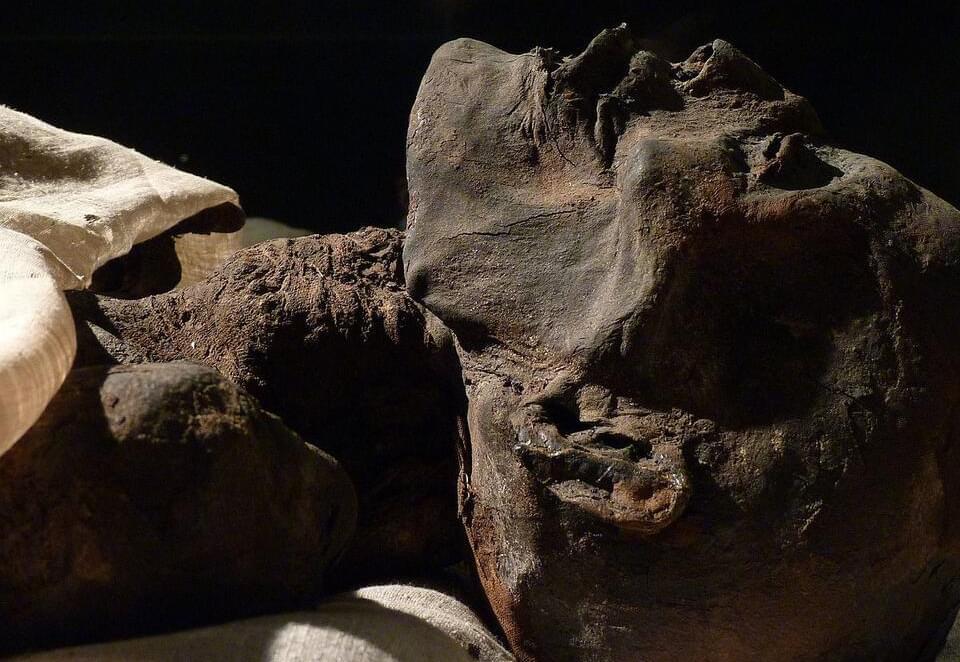Photons come in every wavelength you can imagine. But one particular quantum transition makes light at precisely 21 cm, and it’s magical.



Covering interstellar distances in a human lifetime is far from easy. Going at 1 percent of the speed of light, it would take over 400 years to reach the closest star, and we have not been able to propel any spacecraft even close to that speed. But a new method aims to get to those speeds and maybe more – and it takes inspiration from the mighty albatross.
Chemical propulsion can be very useful in achieving high speeds pretty quickly, but there’s the drawback in that you need to carry the fuel with you, which means you need to be able to generate more thrust to shift the extra fuel and so on. It’s a huge issue when it comes to rocket science. A realistic alternative is ion propulsion, used to slowly and successfully maneuver the Dawn spacecraft, but it would take an equally long time to reach enough speed with such a steady but small acceleration.
Solar sails hold a more intriguing possible approach. Proposals such as the Breakthrough Starshot see lasers used to massively accelerate a spacecraft the size of a credit card to one-fifth the speed of light. But, you need to build a very powerful laser. A similar method using sunlight might also work, although not up to such a high speed.
For millennia, humans have been harnessing #microbes to produce everything from breads, to cheeses, to alcohol. Now these tiny organisms have produced another powerful revolution — the gene editing tool CRISPR. Rodolphe Barrangou, Ph.D., was working at the food company Danisco, where he was trying to produce yogurt lines resistant to contamination. In a series of groundbreaking experiments, he helped uncover what CRISPR was, how it worked, and why it could be so transformative.
Speaker Biography:
Rodolphe Barrangou, Ph.D., studies beneficial microbes, focusing on the occurrence and diversity of lactic acid bacteria in fermented foods and as probiotics. Using functional genomics, he has focused on uncovering the genetic basis for health-promoting traits, including the ability to uptake and catabolize non-digestible carbohydrates. He spent 9 years at Danisco-DuPont, characterizing probiotics and starter cultures, and established the functional role of CRISPR-Cas as adaptive immune systems in bacteria. At NC State, he continues to study the molecular basis for their mechanism of action, as well as developing and applying CRISPR-based technologies for genotyping, building immunity and genome editing.
Producers: Sarah Goodwin, Rebecca Ellsworth.
Cinematographer: Derek Reich.
Editor: Rebecca Ellsworth\
Graphics: Chris George, Maggie Hubbard.
Assistant Camera: Gray McClamrock.
Drone aerials: Travis Jack.
Supervising Editor: Regina Sobel.
Field Producer: Meredith DeSalazar.
Interview by: Adam Bolt.
Associate Producer: Shelley Elizabeth Carter.
Executive Producers: Shannon Behrman, Sarah Goodwin, Elliot Kirschner.
Except where otherwise noted, this work is licensed under.
http://creativecommons.org/licenses/by-nc-nd/4.0/
© 2007–2022 Science Communication Lab™. All rights reserved.
#biology #research
1 hour “interview” with ChatGPT.
Is OpenAI’s ChatGPT capable of having a coherent conversation? We find out in this special edition of the TWIML AI Podcast!
In this episode of the podcast, we are joined by ChatGPT, the latest and coolest large language model developed by OpenAl. In our conversation with ChatGPT, we discuss the background and capabilities of large language models, the potential applications of these models, and some of the technical challenges and open questions in the field. We also explore the role of supervised learning in creating ChatGPT, and the use of PPO in training the model. Finally, we discuss the risks of misuse of large language models, and the best resources for learning more about these models and their applications. Join us for a fascinating conversation with ChatGPT, and learn more about the exciting world of large language models.
The complete show notes for this episode can be found at twimlai.com/go/603.
🔔 Subscribe to our channel for more great content just like this: https://youtube.com/twimlai?sub_confirmation=1

Mammals run the gamut of social organization systems, ranging from loose, ephemeral interactions like aggregations of jaguars in the South American wetlands to the antlike subterranean societies of naked mole-rats (SN: 10/13/21; SN: 10/20/20).
But marsupials — a subgroup of mammals that give birth to relatively underdeveloped young reared in pouches — have traditionally been considered largely solitary. Some kangaroo species were known to form transient or permanent groups of dozens of individuals. But among marsupials, long-term bonds between males and females were thought rare and there were no known examples of group members cooperating to raise young. Previous work on patterns of mammalian social evolution regarded about 90 percent of examined marsupial species to be solitary.
“If you look at other [studies] about some specific species, you will see [the researchers] tend to assume that the marsupials are solitary,” says Jingyu Qiu, a behavioral ecologist at CNRS in Strasbourg, France.

Unless you have been living under a rock, you have heard of this new ChatGPT assistant made by OpenAI. You might be aware of its capabilities for solving IQ tests, tackling leetcode problems or to helping people write LateX. It is an amazing resource for people to retrieve all kinds of information and solve tedious tasks, like copy-writing!
Today, Frederic Besse told me that he managed to do something different. Did you know, that you can run a whole virtual machine inside of ChatGPT?
Great, so with this clever prompt, we find ourselves inside the root directory of a Linux machine. I wonder what kind of things we can find here. Let’s check the contents of our home directory.


Gigantopithecus was a massive gorilla-like creature that stood 10 feet tall and weighed upwards of 1,100 pounds making it the largest primate that ever lived. It thrived in the tropical forests of Southern China during the Pleistocene Epoch between 2.6 million to 11,700 years ago.
Fossilized teeth from Gigantopithecus were first discovered by a Dutch paleontologist named GHR Koenigswald. Referred to as “dragon’s teeth,” these specimens were sold in Chinese apothecaries for their purported medicinal benefits.
According to reports, the size of the teeth led some early scientists to suggest they belonged to human ancestors who may have been giants: “The teeth, though large, have a few similarities to human teeth, and this led some paleomorphologists to speculate that humans might have had “giant” ancestors. Later discoveries of complete mandibles demonstrated that they were from extinct apes.”

In 1992, scientists found drugs such as cocaine, hashish, and nicotine in some Egyptian mummies. These mummies came to be known as the “cocaine mummies.”
Traces of the drugs were found in the hair and skin of the mummies. Initially, scientists thought that this was a result of contamination and that perhaps improper techniques had been used to analyze the mummy.
There are serious indications from attempts to create a quantum theory of gravity that time must disappear completely from the description of the quantum universe. This has been known since 1967, when DeWitt discovered the Wheeler-DeWitt equation. I shall argue that this forces us to conceive explanation and causality in an entirely new way. The present can no longer be understood as the consequence of the past. Instead, I shall suggest that one may have to distinguish possible presents on the basis of their intrinsic structure, not on the basis of an assumed temporal ordering. If correct, this could have far-reaching implications. Hitherto, because the present has always been interpreted as the lawful consequence of the past, science has made no attempt to answer ‘Why’ questions, only ‘How’ questions. But if there is no past in the traditional sense, we must consider things differently. Thus, if we eliminate time, we may even be able to start asking “Why” questions.
Specification of a point and tangent vector in conformal superspace (CS) determines a slab of spacetime in CMC foliation and unique curve in CS.
Almost perfect implementation of Mach’s principle because local inertial frames, local proper distance and local proper time all emergent and determined by the universe’s shape and shape velocity.
The Mystery: Shape velocity, as opposed to shape direction, is last vestige of Newton’s absolute space and time. Responsible for expansion of the universe and perhaps perfect transformation theory in quantum theory of the universe.
This lecture was delivered on the 16th Kraków Methodological Conference “The Causal Universe”, May 17–18, 2012.
More information:
http://causal-universe.philosophyinscience.com.
http://copernicuscenter.edu.pl.
Photos:
http://www.adamwalanus.pl/2012/cc120517.html